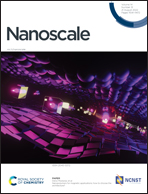New enhancement mechanism of an ether-based electrolyte in cobalt sulfide-containing potassium-ion batteries†
Abstract
The performance of potassium (K)-ion batteries (KIBs) is not only dependent on electrode materials but also highly related to the electrolyte. In this work, we obtained a cobalt sulfide (CoS)-containing hybrid by the hydrothermal method and subsequent thermal treatment for K-ion storage. After ether-based electrolyte matching, the CoS-containing hybrid achieves a specific capacity of 229 mA h g−1 at 1 A g−1 after 300 cycles, and presents enhanced performance in the ether-based electrolyte. According to our measurement and calculation, the CoS-containing hybrid in the ether-based electrolyte promotes the formation of a highly anionic coordination solvated structure, which contributes to the enhancement of the stability of the electrolyte for K-ion storage. In addition, the strong coordination of anions also facilitates the rapid separation of the solvent during the potassiation process, which is also in favor of the decrease of the side reaction of the CoS@RGO hybrid for KIBs. We believe that our work will provide a new perspective on electrolyte engineering to boost the electrode material performance for K-ion storage.

- This article is part of the themed collection: 2022 Nanoscale HOT Article Collection


 Please wait while we load your content...
Please wait while we load your content...